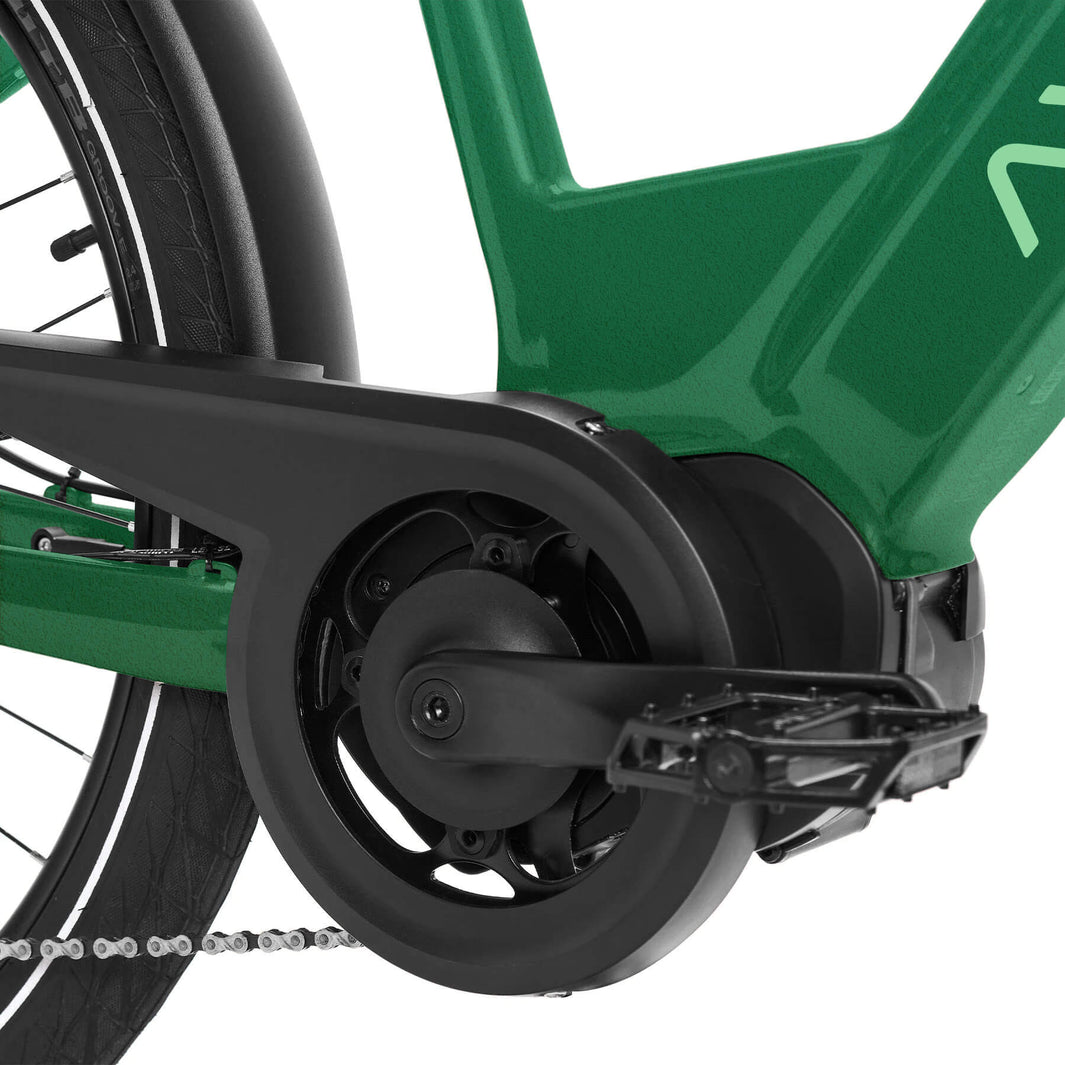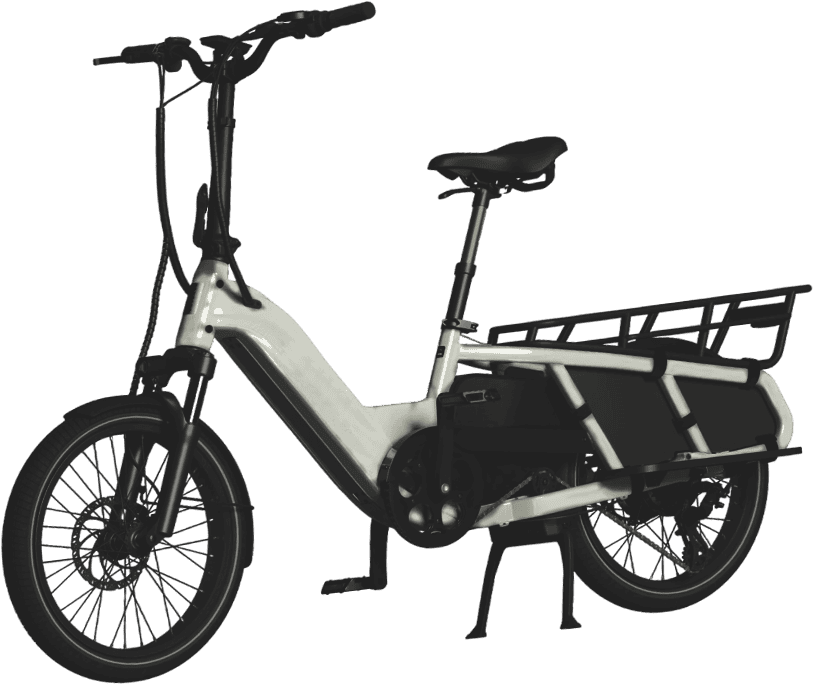E-bikes hit the market in the early 1990s but exploded in popularity only in 30 years. Statistics show that 96% of riders enjoy electric cycles more than traditional two-wheelers, while the number of e-bikes sold in the US is expected to reach over 6 million units in 2025. Despite such a high demand and major market growth, there are still many misconceptions regarding electric bicycles and their operation. This guide aims to clarify things, so let’s answer the question "what is an electric bicycle?" and explore how you can choose a model that suits you best.
Also Read: How to Choose Electric Mountain Bike?
E-Bike: What Is It And How Does It Work?
An e-bike is a three- or two-wheeled bicycle equipped with an electric bike motor and a battery, which differentiates it from a regular cycle. Explore its principal components in detail to understand how it works:
-
Motor: we can think of a motor as the heart of an e-cycle. It functions based on a concept of electromagnetic induction to provide assistance when you are pedaling. Hence, these bikes are also called pedal-assist. Motors are equipped with sensors designed to recognize your riding speed and rhythm. When you activate the motor, electricity creates a magnetic field by passing through its inner coils and, thus, causes its central axis to rotate. These movements are then transferred to the drivetrain, pushing the bicycle forward. Electric bike motors come in two types:
-
Hub-drive: integrated into the rear or front wheel hub, which makes them easier to maintain. They are simpler in design and easier on the wallet. At the same time, a direct power source makes them perfect for casual riding.
-
Mid-drive: mounted at the bottom bracket of an e-bike (between the pedals), providing better weight distribution during rides. Direct connection to the drivetrain enhances the torque, so off-road cycling and hill climbing feel much smoother.
-
Battery: e-bicycle motors are powered with rechargeable batteries, allowing you to handle long distances with ease. Battery capacity typically ranges from 40 to 120 miles per charge, depending on a number of factors like pedaling intensity and usage mode. Some e-bicycles (e.g., long-tail Lagom bike) allow installing a second battery to increase the distance you can ride with pedal assistance.
Pedal-Assist vs. Throttle-Powered E-Bikes
Pedal-assist electric bicycles imply that the ride gets easier every time you turn the pedals. Throttle-powered cycles work differently, as you can activate the motor by twisting a handlebar or pressing a lever. Whatever option you choose, cycling will feel as smooth and pleasurable as possible. It all comes down to your willingness to hit the pedals when activating the motor. You may also find bicycles incorporating both throttle and pedal assistance (e.g., Agile 2 wheeled bike), so you can choose the most convenient option based on your actual cycling needs.
Types of Electric Bikes
Like traditional two-wheelers, e-bikes differ in types, catering to the riding style and preferences of modern cyclists. Here are the most common options:
-
City e-bikes: these are the most popular electric bicycles designed for enjoyable rides in urban environments (daily commutes, shopping, school runs, short family trips, etc.). City bikes feature lightweight, ergonomic frames, convenient saddles, and heavy-duty rear racks. The best models have mid-drive motors and advanced gearing systems for smooth navigation through the city streets.
-
MTBs: what are e-bikes categorized as MTBs? These are robust models for easier, faster, and longer rides through tough off-road terrains (trails, forests, mountain paths, etc.). They are equipped with powerful motors and high-capacity batteries to help you tackle challenging areas with less effort. Mountain e-bikes also boast better suspension systems, durable frames, and wide, knobby tires.
-
Folding e-bikes: the power of these electric bikes lies in their compactness and portability. They can be folded and unfolded in mere seconds, making them perfect for riders with a limited storage space or those taking their bicycles on public transport. Folding cycles have small wheels and super-light frames, which enhances their maneuverability and makes them ideal for tight urban areas.
-
Cargo e-bikes: this type of electric bicycle can withstand heavy loads from 200 to 450 lbs. To make this possible, cargo bikes have large rear and front racks, while their frames are constructed from durable materials for superior strength. You can use such an e-cycle to carry groceries, pets, and children without breaking a sweat.
Benefits of E-Bikes: What Is So Special About Them?
An e-bike has long proved to be an affordable, sustainable, and convenient means of transportation, providing many benefits for both city dwellers and adventure seekers:
-
Eco-friendly transportation: an e-bicycle is one of the most sustainable options to get around. It produces 4.9 grams of CO₂ per mile, which is 50 times less than a gas car and 6 times less than an electric vehicle.
-
Cost savings vs. cars and public transport: with an electric bicycle, you can forget all the inconveniences associated with public transport, including high fares. Plus, bikes are much cheaper than cars, as you do not need to purchase fuel and pay parking fees. They also require minimum maintenance, saving you even more money.
-
Helps with longer commutes and hilly areas: electric bicycles are extremely efficient since they allow you to handle any terrain without exhaustion. Be it a steep hill or a long-distance trip through intense stop-and-go traffic, you will still feel fresh after the ride.
-
Accessible for various fitness levels: riding an e-bike is equally easy for beginner and pro cyclists. The option is also perfect for people with mobility or health issues who cannot ride regular two-wheelers.
Choosing the Right E-Bike
Focus on the following factors when shopping around for an electric bicycle that suits you best:
-
Motor power and battery life: make sure a bike is equipped with sufficient motor power and battery capacity to match your cycling needs. If you ride long distances, consider models with a dual battery option and at least a 500-watt mid-drive motor.
-
Weight and frame design: a good bicycle frame should be durable yet lightweight. It’s better to choose aluminum models with an ergonomic design. Arrange a test ride before purchasing a bike and check if it’s convenient for you to get on and off the saddle.
-
Local regulations and speed limits: electric bike laws and speed limits differ from state to state, so check this information in advance. Most US states regulate e-bicycles based on the three-class classification system, which determines licensing, helmet laws, age restrictions, motor power limits, and other requirements you must follow to operate an e-bike legally.
Read also: How Much to Insure an Electric Bike?
Conclusion
Now that we have puzzled out the question "what is an e-bike?" and told you how to choose a model that will match your needs, you are ready to go looking for your dream bicycle. With a high reputation in the US market, Avant bikes stand out as the primary choice for anyone seeking quality and reliability. Check out our offerings to find a suitable electric bicycle that will help you get the best feel of each ride!



